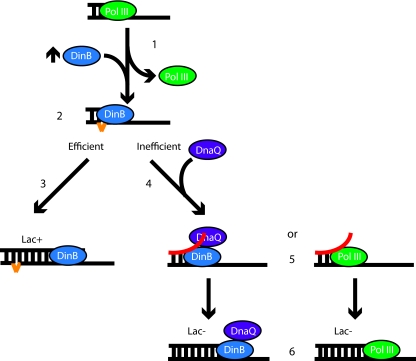Fig. 3.
Model for DnaQ-mediated removal of slipped DNA substrates. (Step 1) DinB (blue) overexpression, as indicated by the up arrow, results in a polymerase switch that presumably removes the Pol III holoenzyme (green). (Steps 2 and 3) On homopolymeric nucleotide runs, DinB can generate slipped DNA substrates (step 2; the extrahelical base is indicated in orange) that, if extended efficiently, can result in a Lac+ colony in CC108 (step 3). (Step 4) If the slipped substrate is inefficiently extended, DnaQ (purple) can gain access to the primer terminus independently of DnaE or as part of the Pol III holoenzyme (green). (Step 5) Through the action of DnaQ, the DNA primer terminus is melted. (Step 6) If the primer is annealed in a nonslipped conformation, then extension will result in a Lac− colony.

